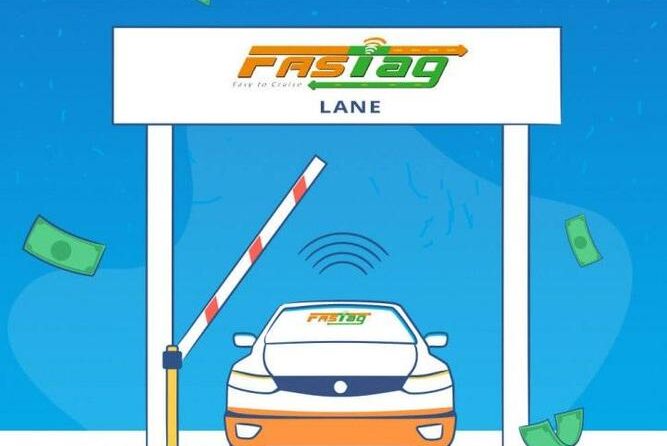
In recent years, the need for improved efficiency in toll collection has led to the introduction of FASTag, a modern solution aimed at alleviating the woes of traditional toll payment methods. This innovative system is transforming the way commuters pay at toll plazas, promising greater convenience and reduced congestion. Let’s delve into the debate of FASTag vs. traditional toll payment to determine which stands superior in the modern era of digital transformation.
The Rise of FASTag
FASTag, an electronic toll collection system, leverages Radio Frequency Identification (RFID) technology to facilitate electronic payments at toll plazas. Introduced by the Indian government, FASTag aims to streamline traffic management and promote digital payments. The tag is affixed to the vehicle’s windscreen, allowing automatic deduction of toll charges from the linked prepaid account without the need for physical transactions.
Advantages of FASTag
- Time Efficiency: One of the most significant benefits of FASTag is its ability to reduce waiting time at toll plazas. Since payments are made electronically, vehicles equipped with FASTag can pass through tolls without stopping, thereby significantly reducing queues and travel time.
- Convenience: FASTag eliminates the hassle of carrying cash or dealing with the exact change for toll payments. Once the tag is linked to a prepaid account or a bank account, funds are automatically deducted, ensuring a smooth and hassle-free transaction process.
- Fuel Savings: With the reduction in idling time at toll plazas, vehicles consume less fuel, contributing to fuel efficiency and cost savings for the commuters.
- Environmental Benefits: Reduced idling and less stop-and-go traffic at toll plazas lead to lower emissions, making FASTag an environmentally friendly option.
- Enhanced Transparency: FASTag provides users with detailed records of their toll transactions, promoting transparency and easier tracking of travel expenses.
Drawbacks of FASTag
Despite its numerous advantages, FASTag is not without its drawbacks. For instance, some commuters may face issues with tag activation or the integration of different toll plazas. However, these challenges are being continuously addressed by the authorities to enhance user experience.
Traditional Toll Payment: A Comparative Look
Traditional toll payment methods involve manual collection of toll fees. Despite being a longstanding practice, it comes with its own set of challenges, especially in the context of modern traffic demands.
- Longer Waiting Times: Manual toll collection often results in long queues at toll plazas, causing delays and frustration among commuters. The process of exchanging cash and providing change further exacerbates congestion.
- Inconvenience: Handling cash for toll payments can be inconvenient, particularly for long-distance travellers who need to ensure they have the correct change. This method also increases the likelihood of errors in payment and delays.
- Higher Fuel Consumption: Frequent idling at toll plazas can lead to increased fuel consumption for vehicles, thereby raising travel expenses for commuters.
- Lesser Transparency: Tracking toll expenditures with traditional toll payments is cumbersome. It involves collecting and managing physical receipts, which can be easily lost or damaged.
Why FASTag is the Better Choice
Considering the above points, it is evident that FASTag offers several advantages over traditional toll payment methods. Here’s why FASTag emerges as the better choice for modern commuters.
- Efficiency and Speed: The primary advantage of FASTag over traditional toll payment is the notable reduction in waiting time at toll plazas. This efficiency translates to faster travel times and reduced stress for drivers.
- Improved User Experience: FASTag significantly enhances the user experience by simplifying the payment process. Commuters no longer need to worry about carrying cash or stopping for manual transactions, making their journeys smoother and more enjoyable.
- Economic Savings: By reducing fuel consumption and travel time, FASTag offers economic benefits to commuters. Additionally, airlines often offer discounted toll charges for FASTag users, which further adds to the cost savings.
- Environmental Impact: In a world increasingly conscious of environmental issues, FASTag’s contribution to reducing vehicle emissions through decreased idling time is a significant advantage. Choosing FASTag fosters a more sustainable and eco-friendly approach to travel.
- Increased Transparency and Accountability: The ability to track toll expenses digitally ensures greater transparency and accountability. Commuters can easily monitor their travel expenditures, which is particularly beneficial for those who frequently travel for work or leisure.
Conclusion
As the world moves towards digitalization and smarter solutions, the adoption of FASTag over traditional toll payment methods stands as a testament to progress. While traditional tolling has served its purpose for many years, the benefits of FASTag in terms of efficiency, convenience, economic savings, environmental impact, and transparency make it the superior choice for today’s commuter.
The future of transportation lies in embracing technology that enhances user experience and promotes sustainability. FASTag, with its numerous advantages, is a clear winner in the battle against traditional toll payment methods. By adopting FASTag, commuters can look forward to a more efficient, greener, and hassle-free travel experience, making it the better choice in the modern era.





